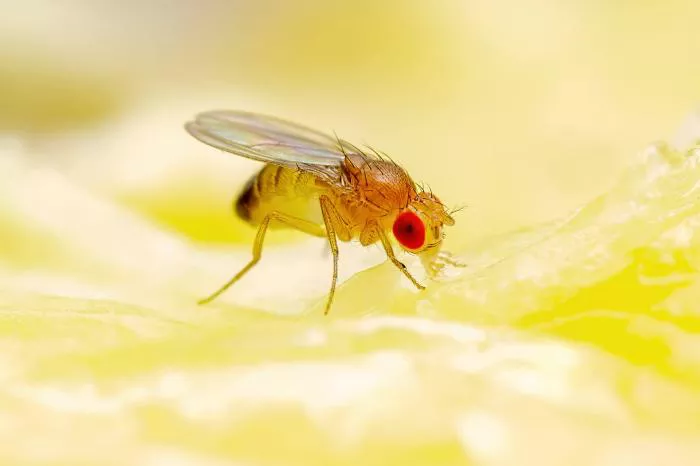As other Australian states have conceded to fruit fly invasions, South Australia’s farmers remain determined to maintain their unique pest-free status. For growers like Raj Ghuman, the fight against the destructive Queensland fruit fly is essential for their livelihood. Known as one of the most harmful pests in horticulture, the fruit fly has recently caused numerous costly outbreaks in South Australia’s Riverland, threatening the region’s standing as the only fruit fly-free area on the Australian mainland.
Fruit Fly-Free Status: A Key to Market Survival
South Australia has long held a reputation for producing clean, chemical-free fruit and vegetables, a distinction that attracts both domestic and international buyers. However, since December 2020, the Riverland region has faced 54 outbreaks of Queensland fruit fly, each requiring farmers to implement costly treatment measures to keep their crops marketable. Ghuman, the owner of Lowana Fruits, says these outbreaks have placed her family’s farming future in jeopardy.
“This pest has been a major threat to our operation,” Ghuman explains. “It’s not only expensive but also time-consuming and mentally taxing to keep up with the necessary treatments.”
According to Ghuman, these treatment protocols are financially draining, especially when selling produce to sensitive markets like Adelaide. “We are hoping to eliminate these outbreaks, but if we can’t regain fruit fly-free status, we might have to stop the business,” she adds.
The Heavy Cost of Eradication Efforts
The toll of the fruit fly battle isn’t only on individual growers; it’s a costly endeavor for the state as well. Since 2020, the South Australian government has invested $145.9 million in fruit fly eradication efforts. This investment underscores the high stakes involved in maintaining the state’s pest-free status, an asset that is rare and economically significant for South Australia’s agricultural sector.
For the government, the question remains: is preserving South Australia’s pest-free standing worth the considerable financial burden? The answer, according to both officials and farmers, is a resounding “yes,” as it secures a competitive advantage for the state’s produce.
Advantages of Pest-Free Produce
South Australia’s pest-free designation comes with distinct advantages for growers. Before the recent outbreaks, farmers in the Riverland could cultivate their produce with fewer chemical treatments, ensuring higher quality and environmentally-friendly farming practices. This allowed South Australian produce to achieve premium prices and access a wider range of markets, both within Australia and abroad.
However, the recent fruit fly invasions have led to a suspension of the pest-free status, imposing strict treatment protocols on growers aiming to export to certain markets. Ghuman expresses concern about the increased chemical use necessitated by these protocols.
“We need to spray every seven days to meet market requirements, and that’s a lot of chemical exposure on the fruit,” she says.
Industry-Wide Effort to Restore Fruit Fly-Free Status
The effort to eliminate fruit flies and restore South Australia’s pest-free status extends beyond individual farmers like Ghuman. Summerfruit SA, an industry organization representing stone fruit growers, is actively working to eradicate the pest and regain the region’s pest-free reputation. Tim Grieger, executive officer of Summerfruit SA, emphasizes that the benefits of eradicating fruit flies extend well beyond the South Australian border.
“The work we’re doing here isn’t just for local growers; it benefits consumers throughout Australia and even internationally,” Grieger notes. By maintaining South Australia’s pest-free standing, farmers not only protect their own operations but also provide high-quality, minimally-treated produce to the broader market.
Chemical Impact on Produce Quality
One of the biggest concerns among farmers is the potential impact of fruit fly treatments on produce quality. Growers are required to apply chemical treatments frequently to comply with export regulations, a necessity that many believe compromises both the quality and environmental sustainability of their products.
“Our produce was once known for being cleaner and requiring less intervention,” says Ghuman. “Now, with the need for constant chemical applications, it feels like we’re compromising the very standards that made South Australian produce desirable.”
The increased use of chemicals could affect not only the taste and texture of the fruit but also consumer perceptions of South Australian produce. Some farmers worry that these treatments will diminish the state’s reputation for clean, high-quality produce, making it harder to compete in premium markets.
Looking Ahead: The Fight Continues
Despite these challenges, South Australian farmers remain committed to regaining their pest-free status. The eradication of fruit fly is a complex, long-term process requiring collaboration between government agencies, industry groups, and individual growers. While the cost is high, the potential loss of South Australia’s unique status is a motivating factor for all involved.
For growers like Ghuman, the goal is to secure a sustainable future for their businesses. “This fight isn’t just about this season’s crop,” she says. “It’s about preserving a legacy for future generations and keeping South Australian produce at its best.”
The fight against the Queensland fruit fly is a costly and challenging journey for South Australia, but the state’s dedication to high-quality, pest-free produce remains steadfast.
Related topics:


